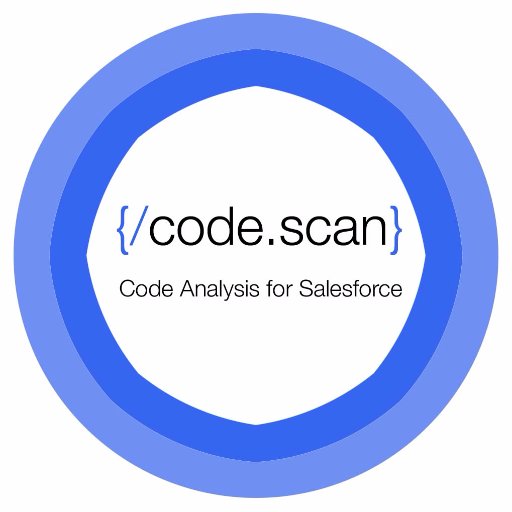**Base API URL**: https://api.configcat.com If you prefer the swagger documentation, you can find it here: [Swagger UI](https://api.configcat.com/swagger). The purpose of this API is to access the ConfigCat platform programmatically. You can **Create**, **Read**, **Update** and **Delete** any entities like **Feature Flags, Configs, Environments** or **Products** within ConfigCat. The API is based on HTTP REST, uses resource-oriented URLs, status codes and supports JSON and JSON+HAL format. Do not use this API for accessing and evaluating feature flag values. Use the [SDKs instead](https://configcat.com/docs/sdk-reference/overview). # OpenAPI Specification The complete specification is publicly available here: [swagger.json](v1/swagger.json). You can use it to generate client libraries in various languages with [OpenAPI Generator](https://github.com/OpenAPITools/openapi-generator) or [Swagger Codegen](https://swagger.io/tools/swagger-codegen/) to interact with this API. # Authentication This API uses the [Basic HTTP Authentication Scheme](https://en.wikipedia.org/wiki/Basic_access_authentication). # Throttling and rate limits All the rate limited API calls are returning information about the current rate limit period in the following HTTP headers: | Header | Description | | :- | :- | | X-Rate-Limit-Remaining | The maximum number of requests remaining in the current rate limit period. | | X-Rate-Limit-Reset | The time when the current rate limit period resets. | When the rate limit is exceeded by a request, the API returns with a `HTTP 429 - Too many requests` status along with a `Retry-After` HTTP header.
What's in this version: 1. Compare two screenshots for layout differences 2. Compare a full screenshot test of browsers to a single baseline browser for layout differences. 3. Compare a screenshot test version to another test version - good for regression tests. 4. Get links to the Comparison UI for visual representation of layout differences
Render Javascript driven pages, while we internally manage Headless Chrome and proxies for you. - Build a custom web scraper with our Visual point-and-click toolkit. - Scrape the most popular Search engines result pages (SERP). - Convert web pages to PDF and capture screenshots. *** ### Authentication Dataflow Kit API require you to sign up for an API key in order to use the API. The API key can be found in the [DFK Dashboard](https://account.dataflowkit.com) after _free registration_. Pass a secret API Key to all API requests to the server as the `api_key` query parameter.
The Docker DVP Data API allows [Docker Verified Publishers](https://docs.docker.com/docker-hub/publish/) to view image pull analytics data for their namespaces. Analytics data can be retrieved as raw data, or in a summary format. #### Summary data In your summary data CSV, you will have access to the data points listed below. You can request summary data for a complete week (Monday through Sunday) or for a complete month (available on the first day of the following month). There are two levels of summary data: - Repository-level, a summary of every namespace and repository - Tag- or digest-level, a summary of every namespace, repository, and reference (tag or digest) The summary data formats contain the following data points: - Unique IP address count - Pulls by tag count - Pulls by digest count - Version check count #### Raw data In your raw data CSV you will have access to the data points listed below. You can request raw data for a complete week (Monday through Sunday) or for a complete month (available on the first day of the following month). **Note:** each action is represented as a single row. - Type (industry) - Host (cloud provider) - Country (geolocation) - Timestamp - Namespace - Repository - Reference (digest is always included, tag is provided when available) - HTTP request method - Action, one of the following: - Pull by tag - Pull by digest - Version check - User-Agent
The Engine API is an HTTP API served by Docker Engine. It is the API the Docker client uses to communicate with the Engine, so everything the Docker client can do can be done with the API. Most of the client's commands map directly to API endpoints (e.g. `docker ps` is `GET /containers/json`). The notable exception is running containers, which consists of several API calls. # Errors The API uses standard HTTP status codes to indicate the success or failure of the API call. The body of the response will be JSON in the following format: ``` { "message": "page not found" } ``` # Versioning The API is usually changed in each release of Docker, so API calls are versioned to ensure that clients don't break. For Docker Engine 17.09, the API version is 1.32. To lock to this version, you prefix the URL with `/v1.32`. For example, calling `/info` is the same as calling `/v1.32/info`. Engine releases in the near future should support this version of the API, so your client will continue to work even if it is talking to a newer Engine. In previous versions of Docker, it was possible to access the API without providing a version. This behaviour is now deprecated will be removed in a future version of Docker. The API uses an open schema model, which means server may add extra properties to responses. Likewise, the server will ignore any extra query parameters and request body properties. When you write clients, you need to ignore additional properties in responses to ensure they do not break when talking to newer Docker daemons. This documentation is for version 1.33 of the API. Use this table to find documentation for previous versions of the API: Docker version | API version | Changes ----------------|-------------|--------- 17.09.x | [1.31](https://docs.docker.com/engine/api/v1.32/) | [API changes](https://docs.docker.com/engine/api/version-history/#v1-32-api-changes) 17.07.x | [1.31](https://docs.docker.com/engine/api/v1.31/) | [API changes](https://docs.docker.com/engine/api/version-history/#v1-31-api-changes) 17.06.x | [1.30](https://docs.docker.com/engine/api/v1.30/) | [API changes](https://docs.docker.com/engine/api/version-history/#v1-30-api-changes) 17.05.x | [1.29](https://docs.docker.com/engine/api/v1.29/) | [API changes](https://docs.docker.com/engine/api/version-history/#v1-29-api-changes) 17.04.x | [1.28](https://docs.docker.com/engine/api/v1.28/) | [API changes](https://docs.docker.com/engine/api/version-history/#v1-28-api-changes) 17.03.1 | [1.27](https://docs.docker.com/engine/api/v1.27/) | [API changes](https://docs.docker.com/engine/api/version-history/#v1-27-api-changes) 1.13.1 & 17.03.0 | [1.26](https://docs.docker.com/engine/api/v1.26/) | [API changes](https://docs.docker.com/engine/api/version-history/#v1-26-api-changes) 1.13.0 | [1.25](https://docs.docker.com/engine/api/v1.25/) | [API changes](https://docs.docker.com/engine/api/version-history/#v1-25-api-changes) 1.12.x | [1.24](https://docs.docker.com/engine/api/v1.24/) | [API changes](https://docs.docker.com/engine/api/version-history/#v1-24-api-changes) 1.11.x | [1.23](https://docs.docker.com/engine/api/v1.23/) | [API changes](https://docs.docker.com/engine/api/version-history/#v1-23-api-changes) 1.10.x | [1.22](https://docs.docker.com/engine/api/v1.22/) | [API changes](https://docs.docker.com/engine/api/version-history/#v1-22-api-changes) 1.9.x | [1.21](https://docs.docker.com/engine/api/v1.21/) | [API changes](https://docs.docker.com/engine/api/version-history/#v1-21-api-changes) 1.8.x | [1.20](https://docs.docker.com/engine/api/v1.20/) | [API changes](https://docs.docker.com/engine/api/version-history/#v1-20-api-changes) 1.7.x | [1.19](https://docs.docker.com/engine/api/v1.19/) | [API changes](https://docs.docker.com/engine/api/version-history/#v1-19-api-changes) 1.6.x | [1.18](https://docs.docker.com/engine/api/v1.18/) | [API changes](https://docs.docker.com/engine/api/version-history/#v1-18-api-changes) # Authentication Authentication for registries is handled client side. The client has to send authentication details to various endpoints that need to communicate with registries, such as `POST /images/(name)/push`. These are sent as `X-Registry-Auth` header as a Base64 encoded (JSON) string with the following structure: ``` { "username": "string", "password": "string", "email": "string", "serveraddress": "string" } ``` The `serveraddress` is a domain/IP without a protocol. Throughout this structure, double quotes are required. If you have already got an identity token from the [`/auth` endpoint](#operation/SystemAuth), you can just pass this instead of credentials: ``` { "identitytoken": "9cbaf023786cd7..." } ```
Docker Hub is a service provided by Docker for finding and sharing container images with your team. It is the world's largest library and community for container images. In addition to the [Docker Hub UI](https://docs.docker.com/docker-hub/) and [Docker Hub CLI tool](https://github.com/docker/hub-tool#readme) (currently experimental), Docker provides an API that allows you to interact with Docker Hub. Browse through the Docker Hub API documentation to explore the supported endpoints.
The Postman API allows you to programmatically access data stored in Postman account with ease. The easiest way to get started with the API is to click the **fork** button to fork this collection to your own workspace and use Postman to send requests. # Overview 1. You need a valid API Key to send requests to the API endpoints. You can get your key from the [integrations dashboard](https://go.postman.co/settings/me/api-keys). 1. The API has an access rate limit applied to it. 1. The Postman API will only respond to secured communication done over HTTPS. HTTP requests will be sent a `301` redirect to corresponding HTTPS resources. 1. Response to every request is sent in [JSON format](https://en.wikipedia.org/wiki/JSON). In case the API request results in an error, it is represented by an `"error": {}` key in the JSON response. 1. The request method (verb) determines the nature of action you intend to perform. A request made using the `GET` method implies that you want to fetch something from Postman, and `POST` implies you want to save something new to Postman. 1. The API calls will respond with appropriate [HTTP status codes](https://en.wikipedia.org/wiki/List_of_HTTP_status_codes) for all requests. Within Postman Client, when a response is received, the status code is highlighted and is accompanied by a help text that indicates the possible meaning of the response code. A `200 OK` indicates all went well, while `4XX` or `5XX` response codes indicate an error from the requesting client or our API servers respectively. 1. Individual resources in your Postman Account is accessible using its unique id (`uid`). The `uid` is a simple concatenation of the resource owner's user-id and the resource-id. For example, a collection's `uid` is `{{owner_id}}-{{collection_id}}`. # Authentication An API Key is required to be sent as part of every request to the Postman API, in the form of an `X-Api-Key` request header. > If you do not have an API Key, you can easily generate one by heading over to the [Postman Integrations Dashboard](https://go.postman.co/integrations/services/pm_pro_api). An API Key tells our API server that the request it received came from you. Everything that you have access to in Postman is accessible with an API Key that is generated by you. For ease of use inside Postman, you could store your API key in an [environment variable](https://www.getpostman.com/docs/environments) called `postman_api_key` and this [Collection](https://www.getpostman.com/docs/collections) will automatically use it to make API calls. ## API Key related error response If an API Key is missing, malformed, or invalid, you will receive a `401 Unauthorised` response code and the following JSON response: ``` { "error": { "name": "AuthenticationError", "message": "API Key missing. Every request requires an API Key to be sent." } } ``` ## Using the API Key as a query parameter Every request that accepts API Key as `X-Api-Key` request header, also accepts the key when sent as `apikey` URL query parameter. API key sent as part of the header has a higher priority in case you send the key using both request header and query parameter. # Rate Limits API access rate limits are applied at a per-key basis in unit time. Access to the API using a key is limited to **60 requests per minute**. In addition, every API response is accompanied by the following set of headers to identify the status of your consumption. | Header | Description | |-------------------------|-------------| | `X-RateLimit-Limit` | The maximum number of requests that the consumer is permitted to make per minute. | | `X-RateLimit-Remaining` | The number of requests remaining in the current rate limit window. | | `X-RateLimit-Reset` | The time at which the current rate limit window resets in UTC epoch seconds. | Once you hit the rate limit, you will receive a response similar to the following JSON, with a status code of `429 Too Many Requests`. ```json { "error": { "name": "rateLimitError", "message": "Rate Limit exceeded. Please retry at 1465452702843" } } ``` # Support For help regarding accessing the Postman API, feel free to discuss it in our [Discourse Community](https://community.getpostman.com). You can also drop in a line at [help@getpostman.com](mailto:help@getpostman.com). In the event you receive a `503` response from our servers, it implies that we have hit an unexpected spike in API access traffic and would usually be operational within the next 5 minutes. If the outage persists, or your receive any other form of `5XX` error, kindly let us know. # Terms of Use For information on API terms of use and privacy, refer to our terms at [http://postman.com/legal/terms/](http://postman.com/legal/terms/) and our privacy policy at [https://www.postman.com/legal/privacy-policy/](https://www.postman.com/legal/privacy-policy/). # API Reference







